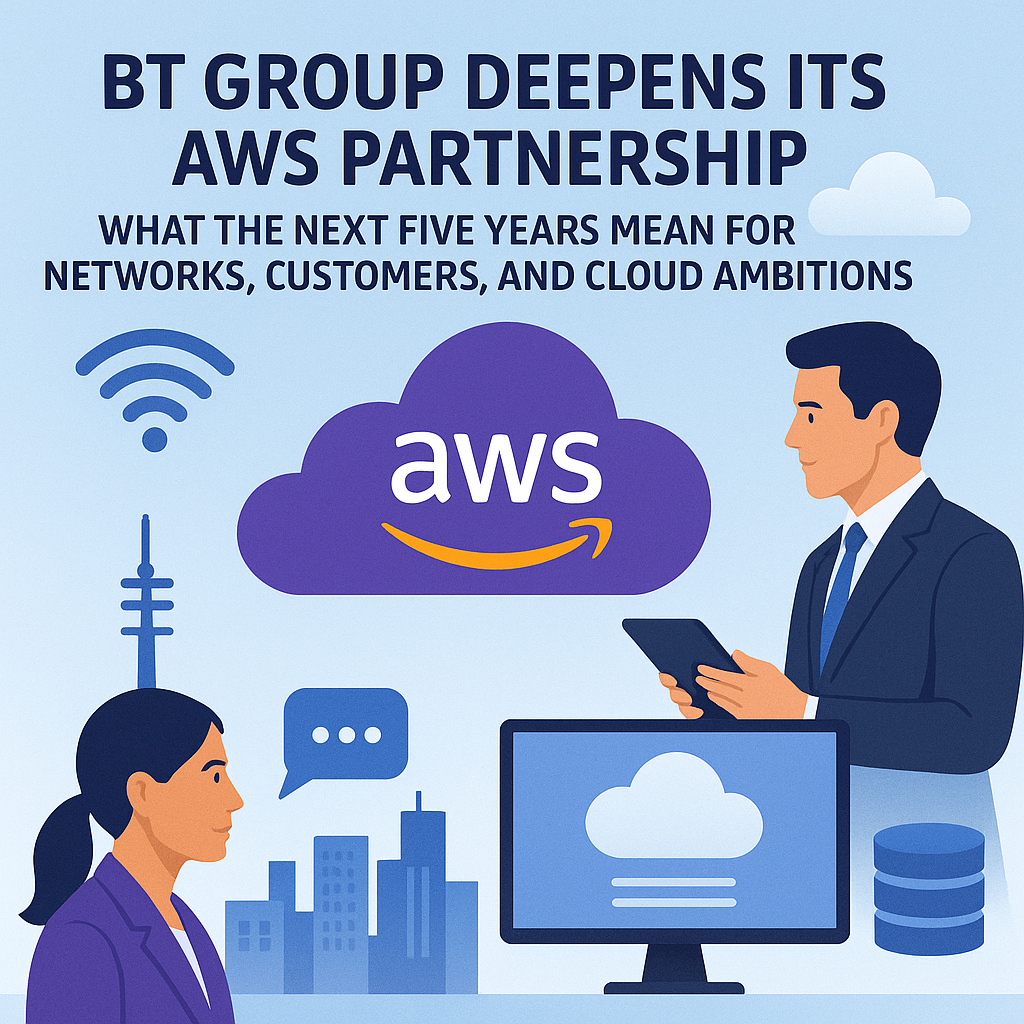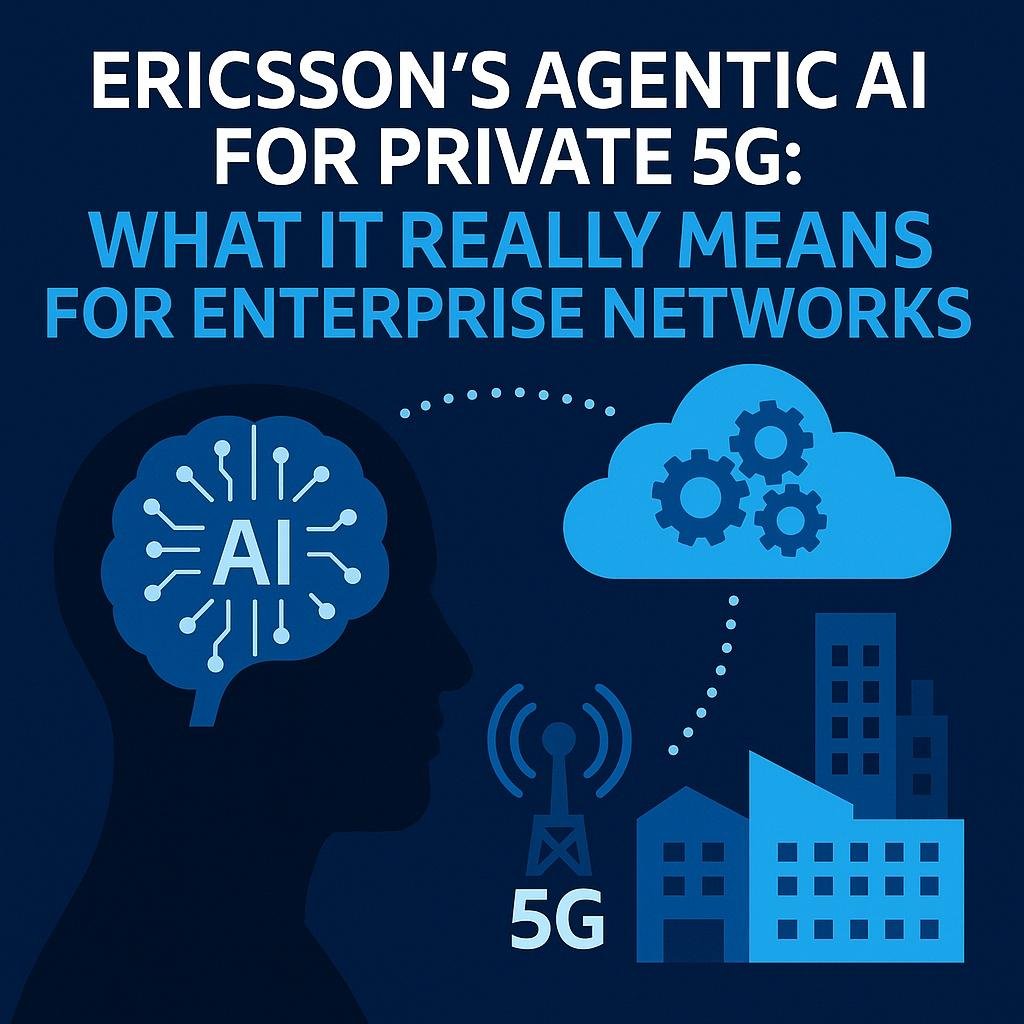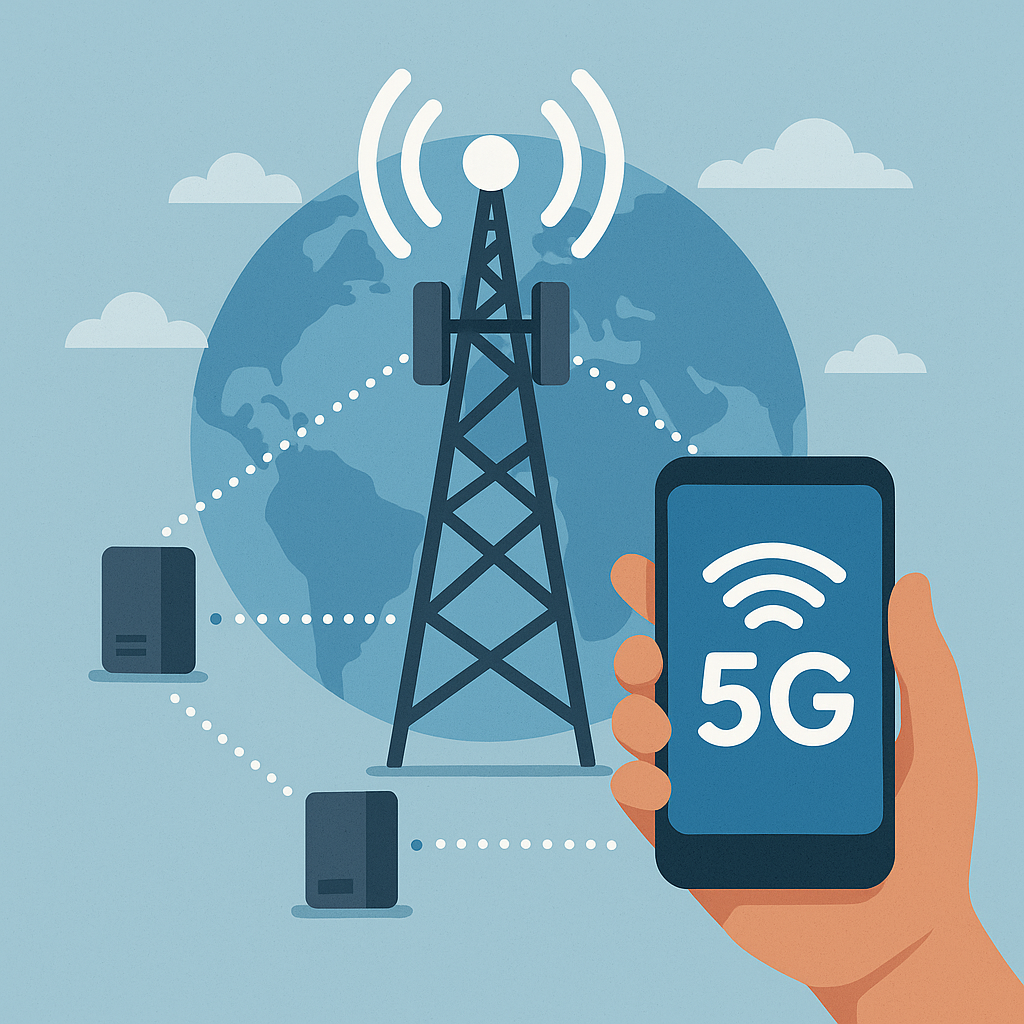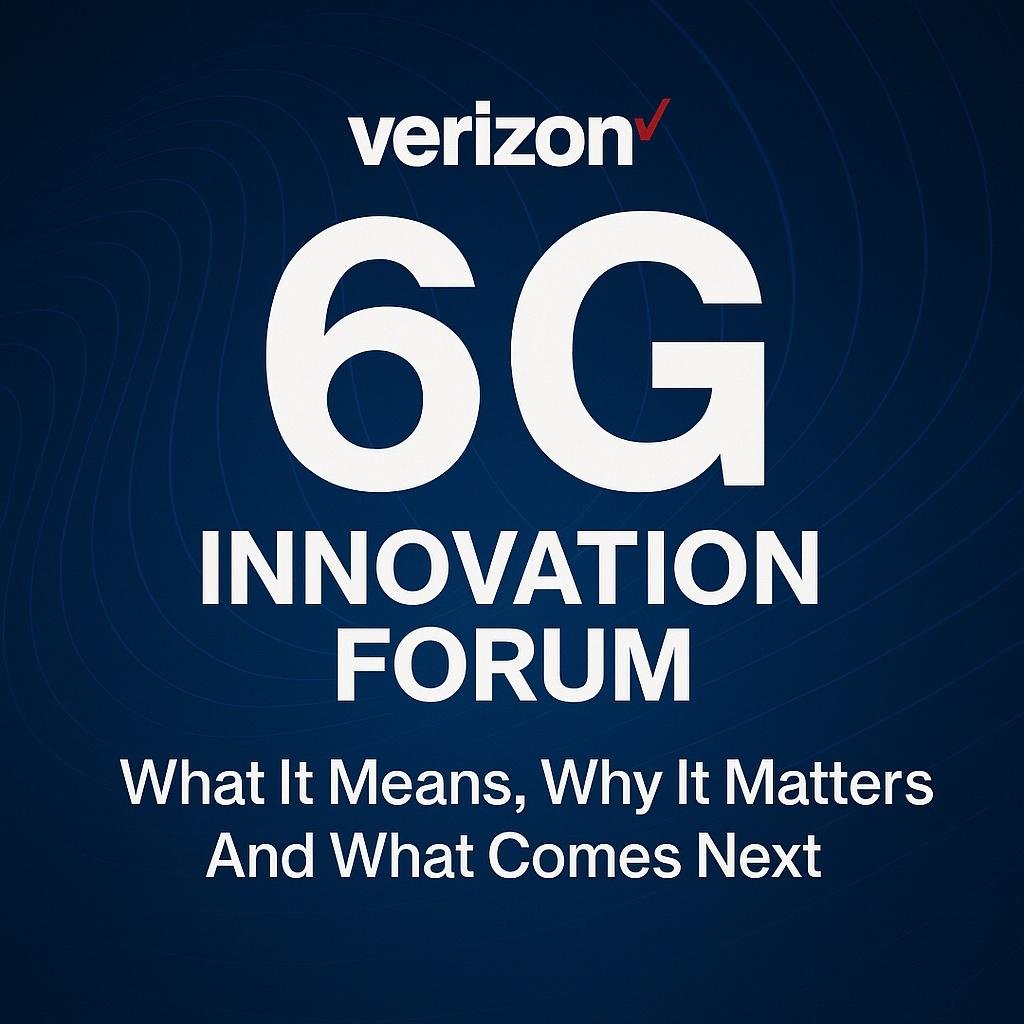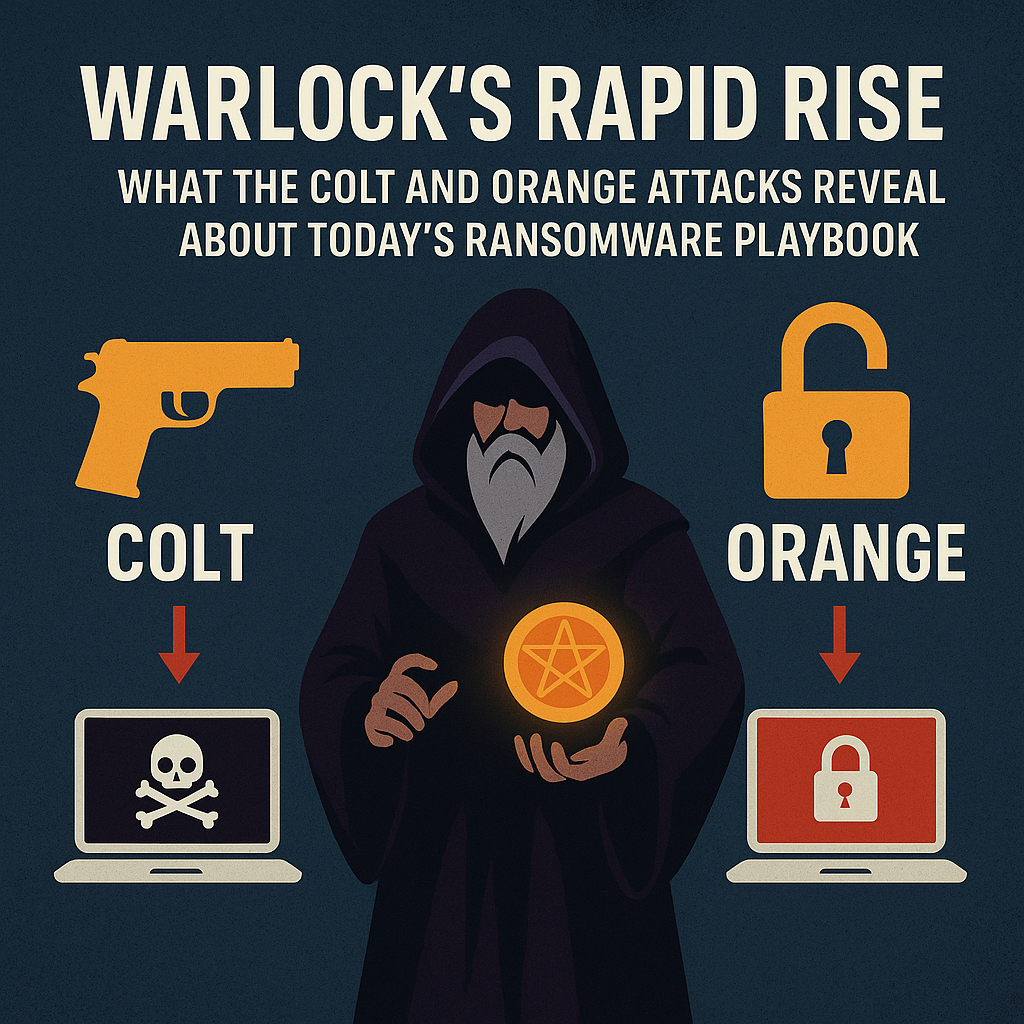Introduction
BT Group has renewed its commitment to a cloud-first future by signing another five-year strategic agreement with Amazon Web Services. The deal sits at the heart of BT’s Build, Connect and Accelerate strategy and supports its goal of becoming the United Kingdom’s most trusted connector. In simple terms, this is about modernising how BT builds and runs its technology so customers get faster, safer and more reliable services as the world becomes more digital.
This article unpacks what that commitment likely means in practice. You will find clear explanations of how cloud helps a national network operator, the kind of workloads that move first, the role of data and AI in customer experience, and the risks that must be managed with a partnership of this scale. The aim is to give you an expert’s view in plain English so you can follow the strategy and judge its progress with confidence.
Why BT Is Doubling Down On Cloud
Telecoms networks face two pressures at once. Customers expect instant, smooth experiences across fixed and mobile. At the same time, the technology stack behind those experiences is growing more complex. Public cloud helps by streamlining how software is built and operated. It turns infrastructure into services that can scale up or down as needed. For a company like BT, that means faster product launches, lower time spent on undifferentiated heavy lifting, and a platform that can support new capabilities without long procurement cycles.
There is a financial logic too. Moving suitable workloads to cloud services can shift spending toward a pay-as-you-go model. When done well, this reduces idle capacity and improves cost visibility. Most important: engineering teams gain access to modern toolchains that speed up development and reduce defects. That is how cloud supports the “Accelerate” part of BT’s strategy.
What The Agreement Likely Covers
A multi-year cloud agreement is not a single project. It is a programme with many tracks. The most common tracks for a national operator include application modernisation, data and analytics, network cloudification, and developer experience. Here is how those tracks usually unfold and how they align with BT’s Build, Connect and Accelerate pillars.
Application Modernisation
Large operators run hundreds of applications: billing, provisioning, service assurance, field operations, marketing platforms and more. Many of these systems were built for on-premises data centres. Modernisation usually starts by identifying quick wins: customer-facing portals, analytics sandboxes, event-driven microservices around existing systems, and seasonal workloads that benefit from elastic scaling.
Teams typically adopt containers and serverless functions to reduce operational overhead. Continuous integration and continuous delivery pipelines become standard. Releases become smaller and more frequent. Incident response improves because telemetry is richer and more consistent across environments.
Network Cloudification
Networks are increasingly software-defined. Instead of buying only fixed appliances, operators deploy virtual or cloud-native network functions for tasks such as firewalls, content filtering, session management and parts of the 5G core. Cloud helps standardise deployment, automate scaling, and simplify lifecycle management for these functions.
Edge computing is another piece. Some latency-sensitive services benefit when compute is placed closer to users. That could include gaming, video analytics, IoT control, or enterprise private networks. A modern cloud agreement creates the option to place workloads in central regions or at approved edge locations to meet these needs while keeping operations consistent.
Data Platforms That Power AI
Telecoms generate vast amounts of telemetry: signal quality, device events, network alarms, call centre transcripts, app interactions. Turning this data into value requires a secure, well-governed platform. Expect BT to continue investing in a unified data foundation with clear policies on quality, lineage and access. On top of that foundation, machine learning can predict faults, personalise offers, and detect fraud.
Practical examples are easy to picture. Proactive care that alerts a customer when the line looks unstable. Network teams that schedule maintenance before a fault hits a busy area. Marketing that reduces irrelevant messages because models can distinguish genuine interest from casual browsing. When the data layer is strong, these use cases scale.
Developer Experience And Culture
Cloud is as much about people and process as it is about technology. A durable five-year plan will standardise the developer experience: templates for new services, shared observability, automated security checks, and clear guardrails that let teams move quickly without creating risk. The payoff is a culture where engineers spend more time building features and less time managing tickets.
Security, Trust And Compliance
Becoming the “most trusted connector” makes security a first-order requirement. Public cloud follows a shared responsibility model. The provider secures the underlying infrastructure. The customer secures what they build on top. In practice, that means strong identity and access management, separation of duties, encryption in transit and at rest, and automated policy checks that block insecure changes before they reach production.
What Customers And Businesses Can Expect
The value should show up in everyday experiences. Pages load faster. Apps feel more responsive. Outages become rarer and shorter. New features arrive regularly rather than in big, disruptive batches. Businesses that use BT for connectivity should see more choice as network APIs and edge options expand. Managed services can become easier to tailor because configuration and analytics live on a flexible cloud platform.
There is also a sustainability angle. When workloads are right-sized and scheduled intelligently, total power usage can be reduced compared to under-used on-premises estates. Combined with smarter routing and AI-assisted maintenance, this supports BT’s wider modernisation goals.
A Sensible Roadmap For The Next Five Years
A programme of this scope needs a steady rhythm. A realistic, value-led roadmap tends to look like this in broad strokes.
Year 1: Prove And Standardise
The first year focuses on clear wins. Identify ten to twenty workloads where cloud can show immediate benefit. Put in place the landing zone, identity model, network connectivity, logging and monitoring standards.
Years 2 And 3: Scale And Simplify
AI use cases move from pilot to routine operations. App release cadence increases as teams adopt common practices. Network functions begin adopting cloud-native patterns where appropriate, with careful performance testing.
Years 4 And 5: Optimise And Differentiate
Differentiating capabilities take centre stage: advanced analytics for customer experience, developer-friendly network APIs, and edge-enabled services for industries that need low latency or enhanced privacy.
How Success Will Be Measured
You cannot manage what you do not measure. The right metrics are practical and tied to outcomes customers can feel. Release frequency should rise while change failure rate falls. Mean time to recovery should trend downward. Service availability targets should be met more consistently across both consumer and enterprise products. Customer support contacts per thousand users should fall for issues driven by performance or reliability. Security posture should improve with fewer high-severity findings during audits. Cloud cost per transaction or per active customer should stabilise or decrease as the estate matures. When these signals move together, they tell a credible story of progress.
Risks To Watch And How To Handle Them
Two risks show up in every cloud transformation. The first is cost drift. Cloud makes it easy to spin up resources, and equally easy to forget them. FinOps practices address this with budgets, alerts, chargeback or showback reports, and regular reviews that trim waste without slowing teams.
The second is over-reliance on a single technology pattern. Standardising on proven services brings speed, but architects still need escape hatches. Designing for portability where it matters, keeping data models well documented, and using open standards where practical all reduce lock-in risk. Skills are a third challenge that is solved with training, communities of practice, and pairing junior engineers with experienced cloud leads.
What This Means For BT’s Strategy
BT’s Build, Connect and Accelerate pillars map cleanly to what a strategic cloud agreement enables. Build refers to the digital foundations: the platforms, pipelines and patterns that let teams deliver safely and quickly. Connect covers the networks and edge capabilities that bring those digital services to life for customers across the country. Accelerate is the payoff: faster innovation cycles, fresher products, and better experiences.
The renewed five-year horizon is important. It signals that BT is not treating cloud as a one-off migration. It is embedding cloud into how the company operates. That is how large organisations create durable change rather than a burst of activity that fades after a year.
Conclusion
BT Group’s new five-year agreement with Amazon Web Services is a logical next step in its ambition to be the United Kingdom’s most trusted connector. The value will not come from slogans. It will come from steady, disciplined execution across application modernisation, network cloudification, data and AI, and a first-class developer experience backed by strong security and governance. If BT hits the right cadence, customers should notice what matters: faster, more reliable services, frequent improvements without drama, and solutions that feel tuned to their needs. The cloud is a means to that end. The next five years will show how well the strategy turns technology into everyday benefits.
